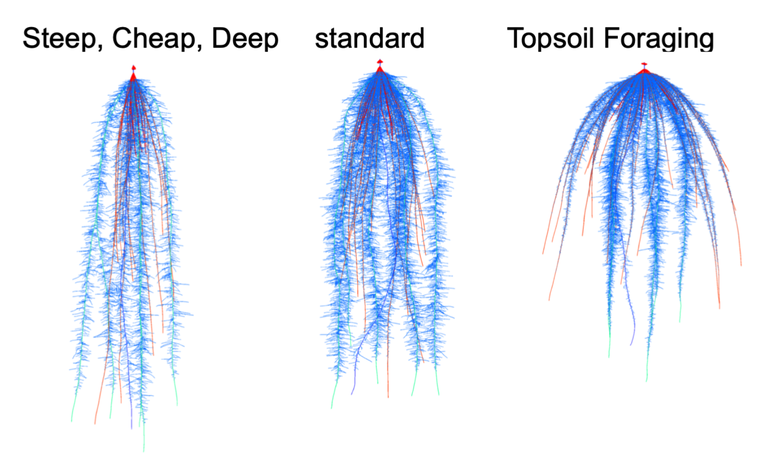Author
JP Lynch
Source
The Plant Journal (2022) 109:415–431 doi: 10.1111/tpj.15560
Download Options
http://dx.doi.org/10.1111/tpj.15560
Abstract
Root architecture can be targeted in breeding programs to develop crops with better capture of water and nutrients. In rich nations such crops would reduce production costs and environmental pollution, and in developing nations they would improve food security and economic development. Crops with deeper roots would have better climate resilience while sequestering atmospheric CO2. Deeper rooting, which improves water and N capture, is facilitated by steeper root growth angles, fewer axial roots, reduced lateral branching, and anatomical phenotypes that reduce the metabolic cost of root tissue. Mechanical impedance, hypoxia, and aluminum toxicity are constraints to subsoil exploration. To improve topsoil foraging for P, K and other shallow resources, shallower root growth angles, more axial roots, and greater lateral branching are beneficial, as are metabolically cheap roots. In high-input systems, parsimonious root phenotypes that focus on water capture may be advantageous. The growing prevalence of Conservation Agriculture is shifting the mechanical impedance characteristics of cultivated soils in ways that may favor plastic root phenotypes capable of exploiting low resistance pathways to the subsoil. Root ideotypes for many low-input systems would not be optimized for any one function but would be resilient against an array of biotic and abiotic challenges. Root hairs, reduced metabolic cost, and developmental regulation of plasticity may be useful in all environments. The fitness landscape of integrated root phenotypes is large and complex, hence will benefit from in silico tools. Understanding and harnessing root architecture for crop improvement is a transdisciplinary opportunity to address global challenges.


